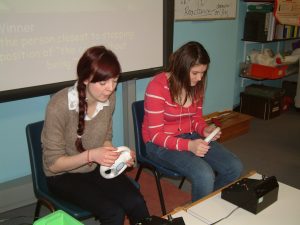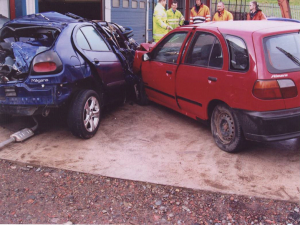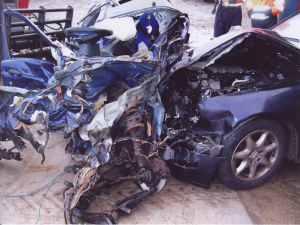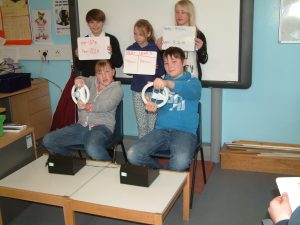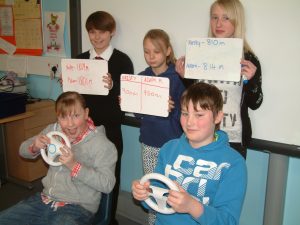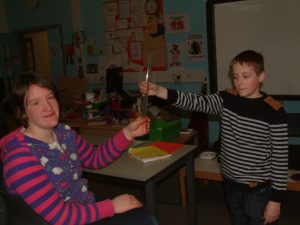The Physics of Road Safety.
With the changes to the Scottish School Curriculum it was decided to make mechanics courses applicable to all students. Living in a rural area many students learn to drive on farms and believe they have little to learn when they begin driving on roads. There have been many fatalities in our Region; even one of these fatalities is prevented then the work would have been worthwhile. We cover work for all ages from 11-18 year of age.
With some basic equipment students can be taught Physics through Road Safety at all levels.
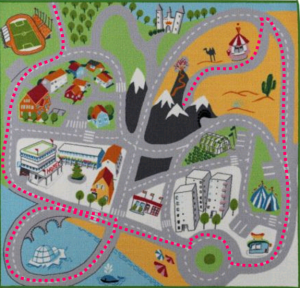
Figure 1: An example of a playmat for students to measure distance and time and calculate average speed. Also used for instantaneous speed and velocity.
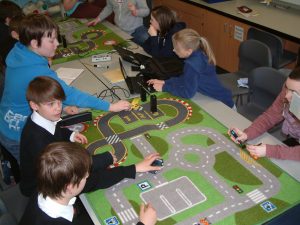
Figure 2: students finding average and instantaneous speeds with playmats.
I use playmats and toy cars for the 11year olds. Students use string and a stopwatch and calculate the average speed to drive a predetermined route around the playmat. Already potential driver attitudes are visible. Some students race around the track as fast as possible just trying to get the fastest average speed, other meticulously obey road rules, even making up indicator sounds at the junctions. We then discuss speed and its role in many road traffic incidents. This leads nicely into instantaneous speed and the difference between the two. Using light gates and interfaces we calculate the instantaneous speed as students drive vehicles along a straight stretch of the road. We discuss the similarities between this and the traffic cameras. If playmats are too expensive a route can always be marked out on paper or chalk across the floor or table.
We then use Fifex reaction timers to introduce the idea of reaction time and how this affects the measurement of instantaneous speed. There are many online games, many related to driving that can also be used to check the students’ reaction times.
We then play a game with the reaction timers called Chicken Run. Using the pre-programmed reaction timers students estimate a virtual drivers’ stopping distance under various conditions and the effects of not concentrating on the likelihood of an accident. Two “drivers” use a steering wheel from a games consul to “drive” the vehicle. The road conditions and the speed of the car are set on the reaction timers. The rest of the students estimate the stopping distance; trying to choose a value as close to the stopping distance as possible without being “hit”. The drivers start by hitting the green start button and when the red light stops flashing the student has to hit the stop button and the reaction time, thinking and braking distance are displayed on the screen. The students calculate the stopping distances by adding the thinking and braking distance. We start off at a low speed on a dry road and gradually increase the speed, road conditions and distractions. For example a student might select to drive at 30 mph in the dry without distractions. Initially the students have little idea of the stopping distance, and in the first few rounds most are hit by the driver. This game has some serious messages, despite being fun. By dividing the class into two groups and having two drivers it adds to the fun, and can demonstrate to students how some drivers might “hit” you but others not. We look at the effects of texting, music distractions and road conditions. It is important to mark out these stopping distances as students have no concept of distances. If the reaction timers are too expensive then a small computer programme could manage the same calculations and the students can run the same tests. The company make a version with foot pedals so that it is more realistic to find the impact of drinking from a bottle and texting whilst driving.
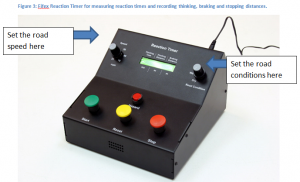
Figure 3: Fifex Reaction Timer for measuring reaction times and recording thinking, braking and stopping distances.
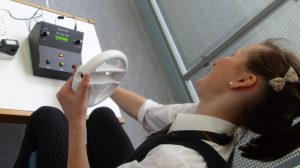
Figure 4: Driver playing Chicken Run
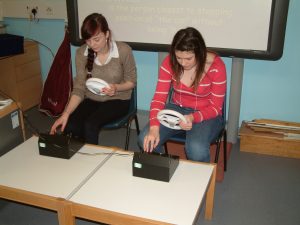
Figure 5: Two drivers playing chicken run
Obviously this device is programmed for the UK market and has the speed in miles per hour, but a version is available in km/h. Students are shocked at how long it takes a car to stop when being driven at the speed limit in icy conditions.
It is not too big a leap to introduce velocity and the difference between speed and velocity. As the playmats are 2D it is easy to get students to realise the difference between how far they’ve travelled (distance) and how far they are from the start as the crow flies (displacement). This helps explain why v is the symbol for speed. Many students now have a compass on their phones and the angle or bearing can be taken to indicate the direction of the vector. There are various routes through the course after speed is completed. Students can be taught about forces and the effect of collision. The EU car safety scheme can be discussed culminating in students trying to build a safety device for the car to reduce the forces received during a crash. Generally, despite all the knowledge, students tend to produce something that bounces rather than crumples resulting in many smaller but potentially damaging forces on the passengers. We call this exercise “Tart Ma Kart”, based on the TV show “Pimp My Ride”. Acceleration can also be fitted into the Road Safety theme and can include choosing a car with a five star safety rating and choosing a car with a high acceleration.
At the end of these activities the students work in the hall where a 1/3 scaled model of a road traffic incident is laid out. We were sponsored to be able to source the materials for this, but with a little imagination, or support from students this could be done with cardboard boxes or borrow from the students if they might have had a ride on car.
Students secure the scene and formulate a hypothesis for what occurred. They are given two witness statements and have to note the similarities and disagreements. Witness statements are not used in any meaningful way in a road incident as they are so unreliable. A book of information is given to the students with details of the road surface and the differences between run under and run over and a talk about the four stages of braking. The scenario is based on a real local road incident and this makes it poignant for the students.
Students measure out the tyre makes and use the equations to discover the speed the pedestrian was hit, the initial speed of the car when the tyre marks were laid down on the road and what would have happened if the car had been driving at or below the speed limit.
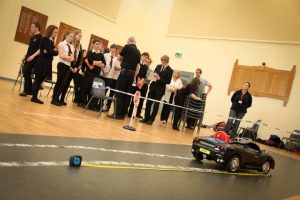
Figure 6: Layout of part of the scene
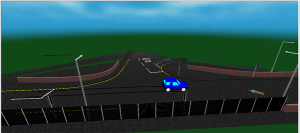
Figure 7: Police reconstruction of the scene.
There is a great sense of achievement when the students finally work out what happened and get the correct answer. Many need a little prompting but the satisfaction is immense. We were lucky enough to have the police in when we were completing this task but it isn’t necessary. It just adds to the knowledge and experience that can be given to the students and allows careers advice to be given.
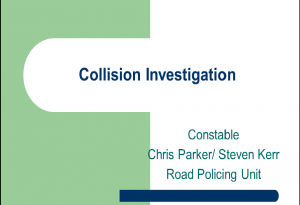
The senior students receive a talk by a Road Crash Investigator around a serious incident occurring in 2006. The police discuss the evidence and explain how the timeline of what occurred can be built up from the evidence of the scene. The students are then given the age and profile of those who caused the accident. The Road Investigator then provides details of the people causing the fatalities and it is a shock to them all. The final task is for the students to use their knowledge of impulse, conservation of momentum and equations of motion to look at two A1 plots of road incidents and being asked to use the evidence to find out what happened.
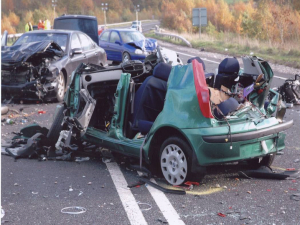
Figure 8: The Glen, one of the worst road crashes in Dumfries and Galloway, and caused by young drivers
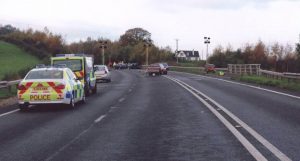
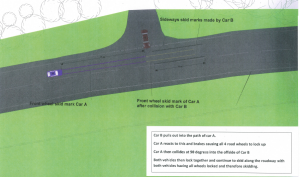
Figure 9: Senior Students use an A1 plot to determine the cause of a road traffic incident.
All students involved in the work benefitted to some extent and it engaged students who might otherwise think Physics is not for them. Much of the work can be adapted for local situations and local police road crash investigators might be able to provide more examples of local incidents that can be used. The two examples that we have been given can easily be adjusted to show drivers on the other side of the road or travelling at local speed limits.
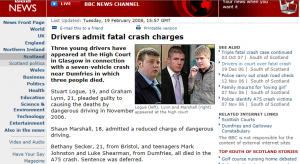
Figure 10: The Glen – one of the worst ever road traffic collisions in our Region and caused by young drivers.
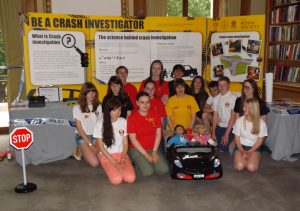
Figure 11: Our work was showcased at the 2014 Royal Society Summer Science Exhibition
References:
Road Crash Materials
Lower school
http://www.mrsphysics.co.uk/bge/category/road-safety/
Middle School
https://www.mrsphysics.co.uk/roadcrashsafety/
Selective Attention Test
https://www.youtube.com/watch?v=vJG698U2Mvo (original)
https://www.youtube.com/watch?v=IGQmdoK_ZfY (advanced)
Reaction Times
http://www.driveractive.com/tips/reaction.html
http://www.humanbenchmark.com/tests/reactiontime/
http://www.moosezone.co.uk/reaction-game.htm
https://www.brianmac.co.uk/rulerdrop.htm
http://www.planet-science.com/categories/under-11s/our-bodies/2011/01/catch-the-ruler!.aspx
The Glen Road Crash
http://news.bbc.co.uk/1/hi/scotland/south_of_scotland/7252425.stm
Fifex Reaction Timers
http://www.fifex.co.uk/portfolio_item.php?ID=02&type=product
![]()

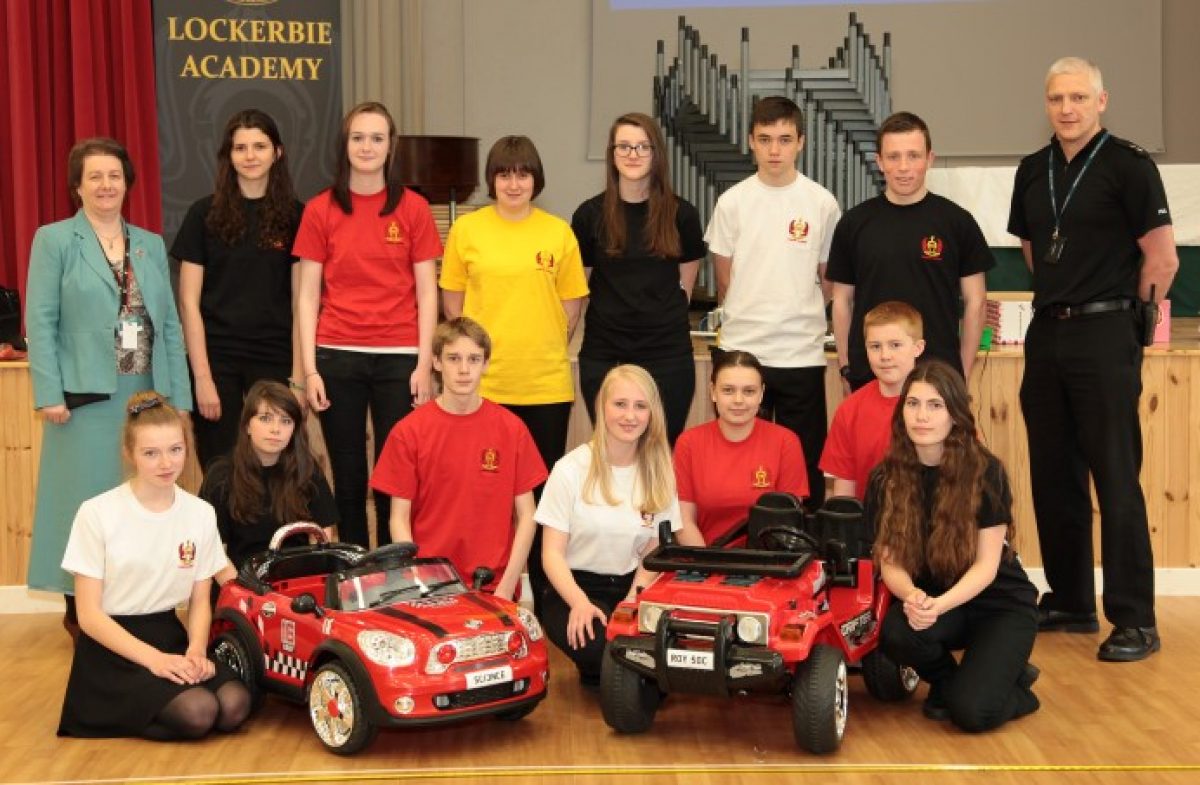
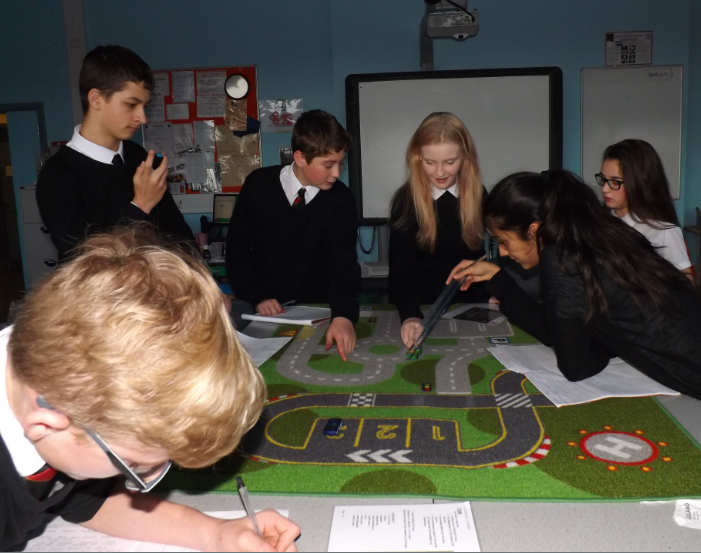
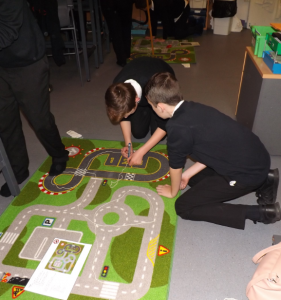
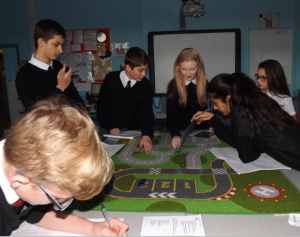
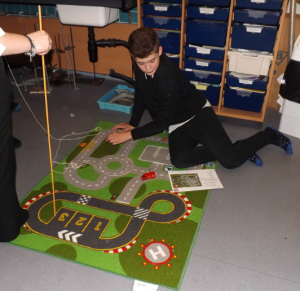
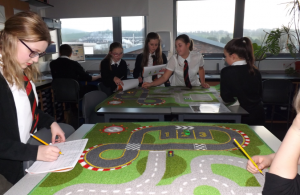
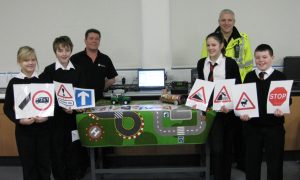
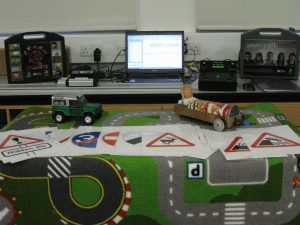
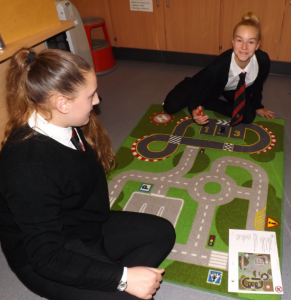
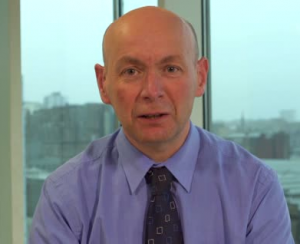


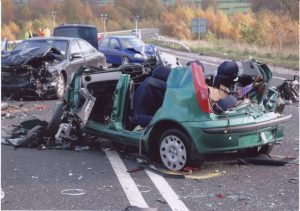
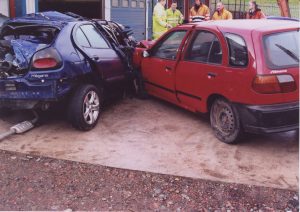
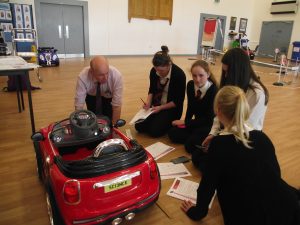
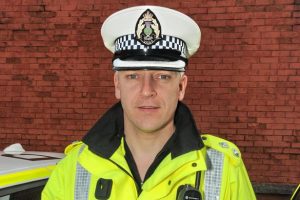
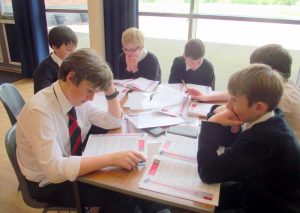
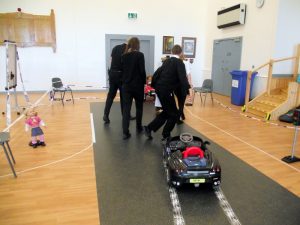 3. lower school kinematics and dynamics would be taught through the work of road safety.
3. lower school kinematics and dynamics would be taught through the work of road safety.
